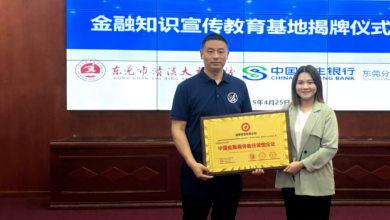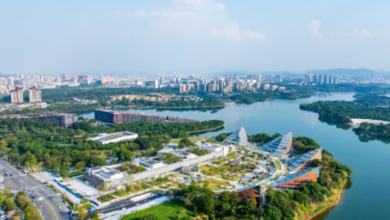Dongguan Accelerates Low-Altitude Economy with 100 Demonstration Scenarios


Introduction: Dongguan’s Bold Move into Low-Altitude Economy
As a city known for its manufacturing prowess, Dongguan is now making waves in China’s emerging low-altitude economy. On July 3, 2025, the city hosted the Guangdong (Dongguan) Low-Altitude Economy Application Scenario Conference, unveiling ambitious plans to establish over 100 demonstration scenarios within the year.
From ultra-light aircraft to drone-assisted lake patrols, Dongguan is leveraging its industrial strengths to become a national leader in this cutting-edge sector. Having visited some of these pilot programs myself, I can attest to the city’s unique advantages—robust supply chains, open regulatory support, and a thriving innovation ecosystem.
Dongguan’s Low-Altitude Economy Blueprint: Key Initiatives
1. 100+ Demonstration Scenarios: From Concept to Reality
The newly released “Dongguan 2025 Low-Altitude Economy Application Scenario Opportunity List” outlines 37 specific use cases across 12 sectors, including:
- Logistics & Transportation (e.g., drone-based highway inspections)
- Public Safety (firefighting, emergency rescue)
- Agriculture & Energy (crop monitoring, power line inspections)
- Tourism & Training (aerial sightseeing, pilot certification programs)
One standout example is the “Eagle Eye” highway inspection system, where drones equipped with AI identify traffic incidents in real time. During my visit, I observed how these drones reduced accident response times by 40%—a game-changer for urban mobility.
2. Strategic Partnerships: Fueling Industry Growth
Dongguan is fostering collaboration between government, academia, and private enterprises. Key partnerships include:
- Shenzhen IDEA Low-Altitude Economy Research Institute (joint R&D)
- China AOPA (aviation training standards)
- Dongguan University of Technology (talent development)
“With strong policy support and abundant testing grounds, we’re training the next generation of drone operators,” shared Huang Wanli, CEO of Dongguan Qihang Aviation.
Why Dongguan? The City’s Competitive Edge
1. Manufacturing & Supply Chain Advantages
Dongguan’s industrial base covers 70% of the low-altitude economy supply chain, from drone manufacturing to sensor production. Local firms like Dongguan General Aviation are already offering private pilot training and aerial surveying services.
2. Integrated Regional Cooperation
The city is aligning with Shenzhen, Guangzhou, and Zhuhai to harmonize airspace management and regulatory policies. This regional synergy ensures smoother operations for cross-city drone logistics.
3. Government Incentives & Infrastructure
Dongguan is rolling out subsidies for:
- Land use for drone testing sites
- R&D funding for AI-powered aviation tech
- Talent programs to attract skilled professionals
The Road Ahead: Challenges & Opportunities
While Dongguan’s progress is impressive, scaling the low-altitude economy requires addressing:
✔ Air Traffic Control: Integrating drones into shared airspace without disrupting traditional aviation.
✔ Public Acceptance: Educating communities on safety and noise concerns.
✔ Regulatory Clarity: Streamlining permits for commercial drone operations.
Yet, the potential is undeniable. By 2026, Dongguan aims to transform its skies into a “smart airspace”—where drones deliver packages, monitor traffic, and even offer aerial tours of Songshan Lake.
Final Thoughts: A Model for Other Cities?
Having tracked Dongguan’s low-altitude initiatives, I believe its “real-world scenarios first” approach sets a benchmark. Instead of theoretical pilots, the city focuses on solving actual problems—like highway inspections or farm monitoring—creating immediate economic value.
For entrepreneurs and investors, Dongguan offers a rare mix of infrastructure, policy backing, and market demand. As Wang Min from Dongguan General Aviation told me, “This isn’t just hype; it’s the future taking off.”
Keywords for SEO:
Dongguan low-altitude economy, drone applications, Guangdong aviation policy, smart city drones, UAV demonstration scenarios





